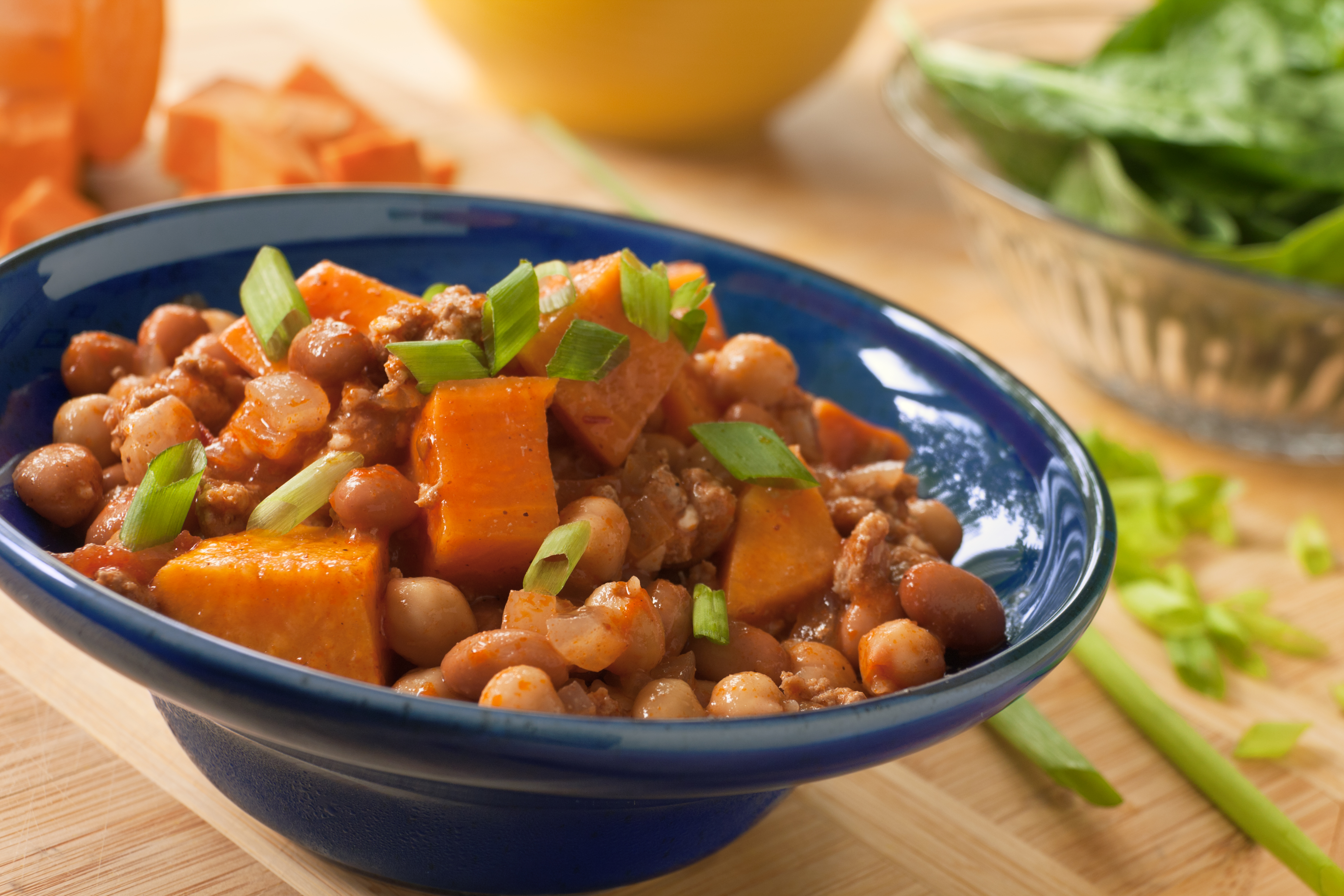You might think that “comfort food” and “healthy” don’t go together naturally, and that might be. After all, many of our cozy favorites are not bursting with kale or quinoa. And sometimes you simply must have Grandma’s stuffed shells—just the way Grandma made it, made with regular pasta and lots of full fat cheese. That’s okay; I get it. If that’s what you want once in a while, that’s perfectly fine—enjoy. But if you’re one of those folks whose comfort food concoctions have become less a “special food” and more of a staple in your recipe rotation—you might want to consider a few easy recipe modifications in the name of healthfulness. These three basic tweaks are easy to achieve and go a long way toward moving your edible soothers onto the “everyday acceptable” list.

Bulk it up with veggies.
Lots of popular comfort foods like casseroles, pasta dishes (yes, I mean macaroni and cheese…and its friends), as well as stews and the old stand-by—chicken soup—can easily be made more fiber-filled and nutrient-rich with the addition of more veggies—including beans. The idea here is not to increase the number of portions, but rather, add volume to each portion with the addition of more low-cal produce. For example, add some broccoli to that mac-and-cheese. If the stew calls for a potato and two carrots, add another potato (or a sweet potato) and toss in some frozen peas at the last minute of heating. That skillet chili mac could use more kidney beans or pinto beans for more protein and fiber.
In other words, there’s no need to fret over measurements for most mixed dishes like these, simply boost the produce power. Bonus: your still-slim serving will keep you more full due to the extra fiber—you may find you can get by with a smaller size serving and feel just as satisfied. (This is a concept popularized by Dr. Barbara Rolls at Penn State and her Volumetrics Plan books.)
Modernize the starch portion.
Your chicken and rice casserole (here’s a skillet version!) will stay essentially the same if you switch the white rice for brown. If that’s too radical for your family, do half white rice and half brown (sometimes this is easily accomplished using a pouch of microwavable plain brown rice). You can also modify a favorite to use barley or yes, even quinoa, instead of rice. Go big by combining an old favorite grain with one that’s new to you: consider bulgur, teff, millet or amaranth. Of course, this works best when the recipe calls for incorporating cooked grains into the dish, such as with most casseroles, since not grains vary in their cooking times. Also consider swapping out regular pasta for whole grain pasta—there are several that are much closer to their original white versions than ever before!
Put the cheese where you’ll taste it.
Many comfort foods include cheese, so you might as well taste it, right? Try cutting down on the amount of cheese that is mixed into the dish, and put more on top where you can see, smell and taste it more readily. This tip works great for casseroles and pasta dishes in particular. Another technique is to decrease the amount of cheese you use overall, but increase the sharpness of the cheese you’re using. Skip the bland mild cheddar and go for sharp or extra sharp then just use less of it—you’ll get more taste for your cheese calorie that way.
Interested in learning more about using unique grains to boost the nutritional value of your cooking? Sign up for our free upcoming webinar, “Ancient Grains: A New Food Trend.”